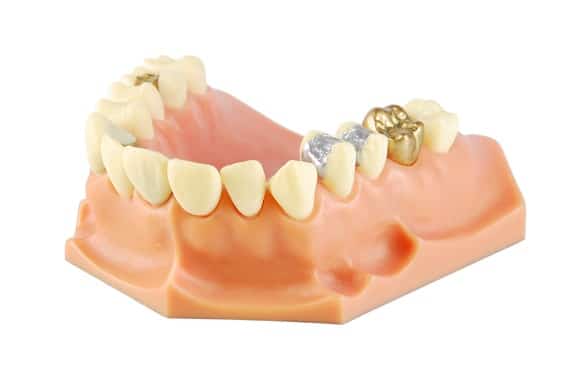Crowns and veneers are two of the most well-known words in dentistry, and they both serve as methods of dental restoration. However, they’re not used as interchangeable services. Although they can both improve the function and form of damaged or misshapen teeth, they each have their own specific applications.
Whether you’re using a crown or veneer, it can restore the function and look of your natural teeth. Which one you’d use among these two would depend on your teeth’s condition and which type of tooth you’re attempting to fix.
So, what exactly is the difference between crowns and veneers? It’s actually less of a singular difference and more of a set of differences.
Page Contents
Differences Between Veneers and Crowns
Here’s the deal: A veneer is a thin layer of porcelain or other materials about a millimeter in thickness. This is as opposed to a dental jacket or dentures. They’re bonded over the existing (incisor or canine) tooth to hide things like chips or cracks.
In contrast, a crown is placed atop the tooth (like a king’s crown, hence the term) or covers what’s left of the tooth. It’s twice as thick as veneers by measuring about 2 millimeters in thickness. It can be made of all-metal alloy, PFM, or porcelain.
Porcelain fused to metal crowns (or simply PFM crowns) are simply that: porcelain that is fused to a metal alloy. It combines the teeth-like aesthetics of porcelain with the pure strength of metal. For many decades, PFM crowns have been known as the gold standard in repairing damaged teeth.
The most common reasons for using these dental restorations include the following:
- Covering discolored teeth.
- Straightening crooked teeth.
- Protecting decayed or weakened teeth.
- Reinforcing chipped, cracked, or broken teeth.
Both veneers and crowns are matched with the current color of your teeth. The only exception are all-metal crowns, which are made more for function and less for aesthetics. Here are some other important things to know:
- The Front-Facing Surface: Like veneers used in construction, these wafer-thin dental veneers only cover the tooth’s front-facing surface. This makes them ideal for front teeth restoration.
- Entire Biting Surface: The crown, meanwhile, replaces the entire tooth’s “crown” or biting surface. The biting surface of incisors and canines are much thinner compared to molars or back teeth.
- Application on Natural Tooth: A crown can be applied to a shaved-down natural tooth or teeth as well as a dental implant or implants. A veneer can only really be applied to natural front teeth or else get a bridge or dentures.
- How They Are Applied to Teeth: When applied to natural teeth, the veneer is bonded unto front-facing incisor or canine teeth. In contrast, crowns are typically used for premolars and molars.
- Crowns are Dental Replacements: Crowns can replace the compromised tooth with it merely serving as an anchor. Otherwise, you’ll need to also get an implant or implants to anchor the crown or bridge to your mouth.
- Cost Comparison: Compared to crowns, veneers cost more since they’re wafer-thin material applied to teeth versus full-on molar-shaped crowns applied atop teeth.
- Material Composition: Some crowns and veneers share the same materials. However, due to the nature of crowns and their need to withstand bite force in a back tooth, more rugged materials are available for crowns.
- Toughness and Ruggedness: Crowns are made to withstand the increased force of molars and premolars when it comes to chewing, biting, grinding, and whatnot. They need to be much tougher than the shell-thin veneer.
- Cosmetic Purposes: Although crowns also serve an aesthetic role, veneers primarily serve that specific role. They do have a measure of restorative functionality for your front teeth.
- Restorative Treatment: In contrast, crowns are primarily made to restore the function of your broken back teeth or molars. They also happen to restore appearance but they’re mostly concerned with restorative treatment.
A Table Covering the Differences of Crowns and Veneers
In regards to the similarities, differences, and pros and cons of crowns and veneers, we can cover all subjects at a glance with the handy table below.
| Type of Restoration | Similarities | Differences | Pros and Cons |
|---|---|---|---|
| Veneer | They are dental restorations that you put right on the damaged tooth in order to save it from extraction and to save you from getting an expensive dental implant. | A veneer is a thin piece of restorative material you put in front of your damaged front teeth in order to restore its function and aesthetic looks. | Although it’s thinner and more prone to chipping, it’s better than dentures or a jacket at restoring your front teeth’s smile without removal of said teeth. |
| Crown | They’re ideally placed on existing teeth to cover cavities or to fix any misshapen forms. | A crown is a thicker piece of restorative material you put atop the broken tooth or a dental implant’s abutment in order to restore function of molars at the back of your mouth. | This is the thicker type of restoration that can deal with the bite force and grinding pressure of molars that would look less aesthetically pleasing when placed on front teeth or incisor and canines. |
What’s a Veneer?
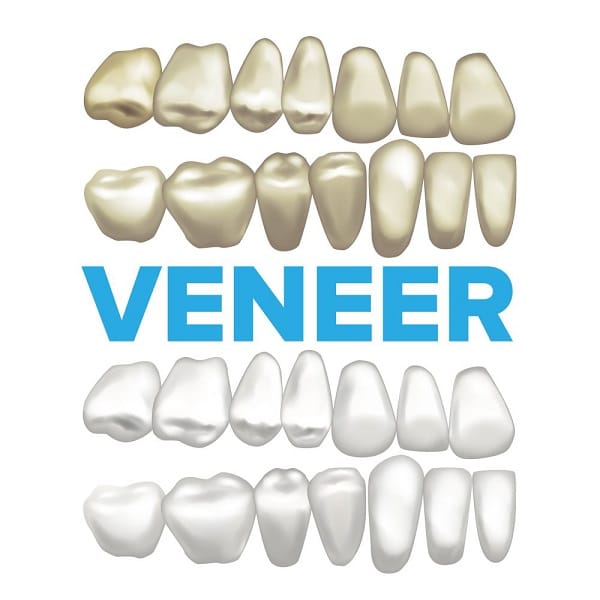
The veneer is a restoration that restores front teeth by covering up their imperfections up front. Crowns require more invasiveness by drilling and shaving off the natural tooth to fit them on it.
In contrast, a veneer leaves more of the original tooth as is because it’s wafer-thin yet bonded up front.
- Grind the Surface: To allow the veneer to bond with the front-facing tooth surface of your incisor or canines, half a millimeter of enamel on the surface must be ground down. The grinding can nevertheless be painful enough to justify the use of a local anesthetic.
- The Natural Tooth Must Be Mostly Intact: If quite a lot of the natural tooth is damaged, it’s better to get a crown to restore it. Otherwise, your tooth should have enough enamel left for the veneer to bond properly onto its surface.
- What to Expect with Getting a Veneer: Here are several things to keep in mind when getting a veneer.
- Digital Scan or Mold: You’ll have to do some digital scanning or create an impression mold of the affected tooth first. They’re sent to a lab if your dentist lacks a lab to do it himself.
- Temporary Veneer: You might also get a temporary veneer placed on your tooth until a proper custom-fit one is placed. Or not. It depends on how much trimming is involved with your affected tooth.
- Permanent Veneer: Once the permanent veneer is ready, it’s then used to replace the temporary veneer. The tooth will be prepped before bonding takes place.
- Special Bonding Cement: Special cement is used to bond the veneer to the prepped tooth surface, with the whole setup hardened with an ultraviolet lamp.
- Night Guard: Once the veneer is cemented into place, there should be minimal tooth movement. However, your dentist might require you to wear a night guard to safeguard your veneer in case you clench or grind your teeth every night unconsciously (bruxism).
What’s a Crown?
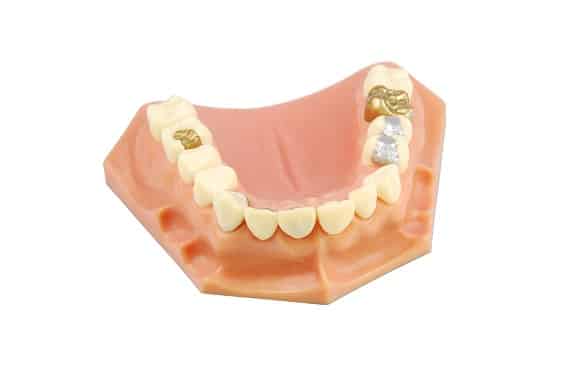
A crown covers the entire tooth, so it’s more like a cap than a crown used by royalty. This restorative denture type is typically placed on the crown or topmost surface of the natural tooth, hence its name.
If more of your teeth is damaged, a crown is the preferable restoration for it, if not an outright extraction for the sake of dental implant placement to anchor the crown into place.
- More of the Enamel is Filed Down: More of the tooth’s enamel requires shaving or grinding down to prepare crown placement. Or if the tooth root and pulp is infected, you’ll need to do a root canal procedure first before crown placement.
- Tooth Decay Requires Decay Removal: The decayed parts of your tooth with caries should be removed first before the crown is made then placed unto the tooth surface. The tooth requires more prepping compared to veneer placement.
- Building Up Crown Support: The tooth should be small enough to fit the inside of the crown while also building it up to support the denture. Otherwise, you’ll be forced to fit in an oversized crown.
- Fixing a Damaged Tooth: It’s not enough to cover a heavily damaged tooth with a crown. The natural tooth should be fixed fundamentally and built up to allow solid crown support. This painful procedure might require local anesthetic.
- What to Expect with Getting a Crown: Getting a crown requires a lot of prepping and also calls for digital scans or molds too.
- Mold or Digital Scan: To manufacture the right size and shape of the permanent crown, your dentist must first produce an impression of the tooth through a mold or digital scan.
- Sent to the Lab for Fabrication: The mold or digital scan will then be sent to the laboratory for crown fabrication purposes. The lab could be off-site or a facility in the dental center itself.
- Temporary Crown: A temporary crown roughly the size of your permanent crown should then be placed on your grinded tooth so that you can use it while waiting for your permanent crown.
- Permanent Crown: The permanent crown (made of alloy, porcelain, or a mix between the two) should then replace the temp crown. Some adjustment might take place to make sure it’s a correctly anchored fit prior to it being cemented into place.
- Changing Your Bite: Crowns may create some movement that changes your bite (from underbite to overbite or vice-versa and so forth). If this happens, your dentist might need to do some crown adjustment.
- Endodontic Treatment: Some endodontic treatments necessitate the placement of crowns while others only require inert material and some filling to restore function to an infected tooth. It depends on how many natural teeth are left.
Which Treatment is the Right One for You?
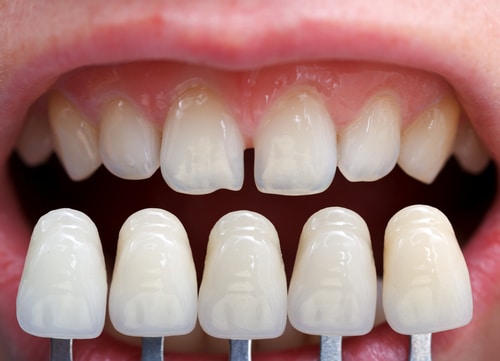
The crown is the best option for back teeth and really worn down or cracked teeth that still have some enough natural tooth remaining.
Otherwise, you’ll need to have that tooth removed and replaced with either a dental bridge or a dental implant to act as a new tooth root for your crown. Crowns are ideal for root canals or teeth with large fillings or cavities in them.
If you have a mostly intact tooth or if you’re restoring front teeth for aesthetics’ sake, you can use a veneer instead. They’re useful for making yellowed teeth instantly whiter and they can even do minor shape corrections for good measure.
Questions to Ask your Dentist
You want to know the cost of the veneer and crown right from the start. You should also contact your insurance in regards to how much of the cost they’ll pay so you have an idea of your out-of-pocket expenses when push comes to shove.
It’s also ideal to know how experienced your dentist of choice is when it comes to placing veneers or crowns onto your teeth.
Otherwise, you should look into dental tourism at places like the Thantakit International Dental Center to get more affordable treatment and a tour of beautiful Thailand in one go.
Even when you take travel costs into consideration, the out-of-pocket costs of a dental tourism procedure is still cheaper than stateside or local procedures, especially without the assistance of dental insurance.
Regardless, ask your dentist the following:
- Will you need a mouth guard after the treatment?
- Is there special care involved for the crown or veneer?
- What are your other options (i.e., bridges, dentures, and implants)?
- How long does the dentist expect the crown or veneer material to last before replacement?
- If the crown doesn’t fit right, what’s the cost of the subsequent visits? Will the initial cost cover it?
How Much Do They Cost?
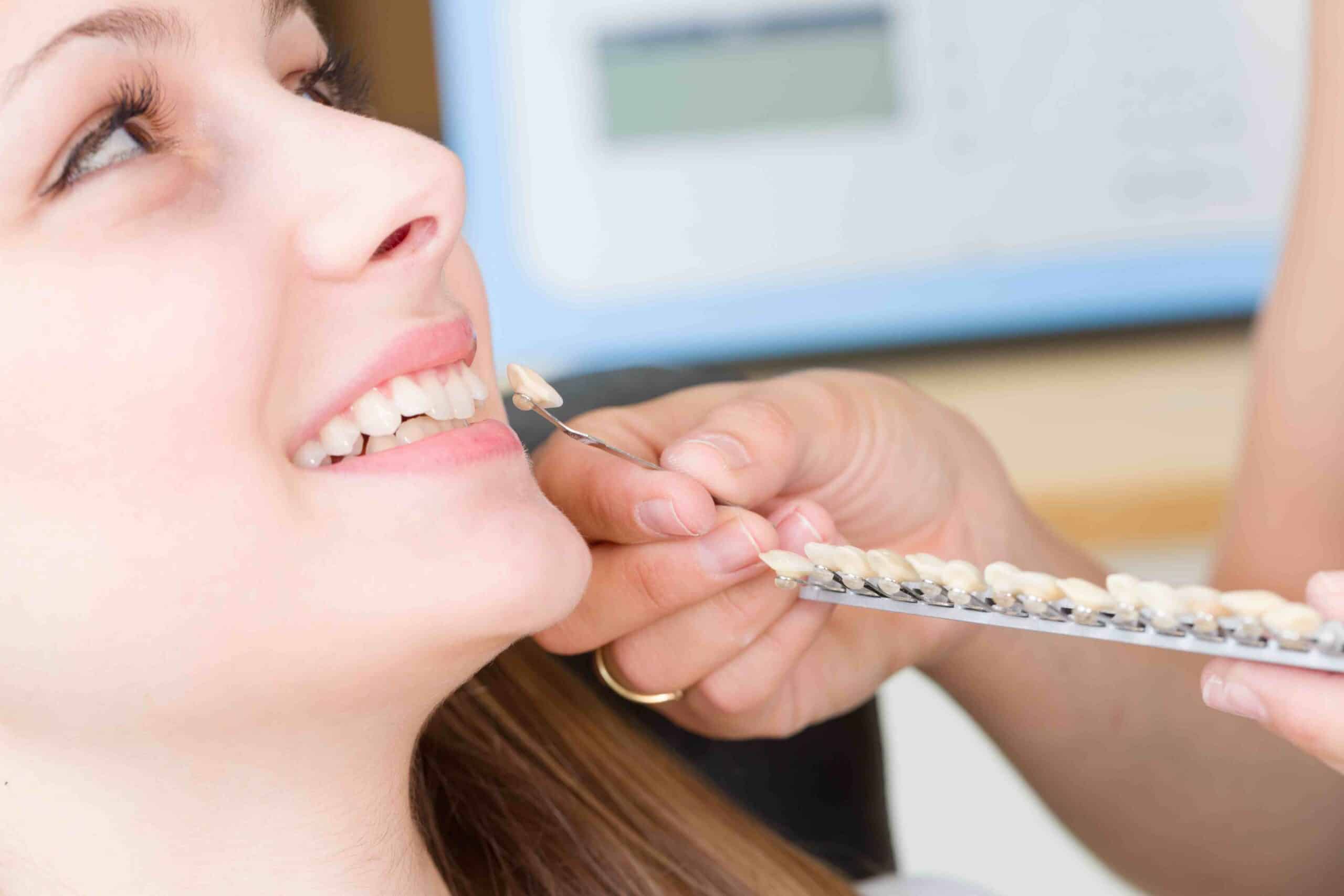
Veneers and crowns are expensive. They vary in costs on a case-by-case basis too, depending on the average prices in your area, where your tooth is in your mouth, and the size of the tooth.
Many dental insurance programs consider this cosmetic dentistry and won’t cover it. Many dental plans also have a maximum annual coverage limit. Therefore, dental tourism might be your best bet here.
-
The Cost of Veneers: In the United States of America, porcelain veneers can cost from $925 to $2,500 per tooth according to the American Cosmetic Dentistry Organization.
In contrast, composite veneers cost from $250 to $1,500 per tooth. If you’re going for porcelain veneers, they cost more but last longer compared to composite veneers.
In Thantakit, the composite veneer costs ฿6,000 ($170). The full ceramic/porcelain veneer costs ฿15,000 ($420). The Zirconia veneer costs ฿18,000 ($510).
The Zirconia veneer with DSD (Digital Smile Design) is at ฿22,000 ($620), with a special ฿20,000 ($570) per tooth if you’re getting 8 teeth treated.
-
The Cost of Crowns: The materials dictate the cost of the crown as well as how much of the material is used relative to the size of the tooth being restored. Prep work can also raise prices too.
The Consumer Guide to Dentistry claims that crowns in the U.S. can range from $1,000 to $3,500 per tooth. The figure doesn’t include extra costs such as root canals, core buildup, tooth prep, and adjustment.
At the Thantakit Dental Center, the PFM crown costs ฿15,000 ($420). The porcelain crown costs ฿20,000 ($570). The CAD/CAM zirconia crown costs ฿22,000 ($620).
The CAD/CAM zirconia crown with 3D digital scanner is ฿25,000 ($710). Full gold crown is ฿30,000 ($850) to ฿35,000 ($990). Zirconia on an implant is also ฿30,000 ($850) to ฿35,000 ($990).
The dental center even offers a premium care warranty in case of additional adjustments and corrections. They even give out a 10 percent discount for on-cash payment.
Regardless, ceramic and porcelain crowns are slightly costlier than all-metal crowns.
The Bottom Line
You can easily enhance the function of your teeth and the beauty of your smile by using either crowns or veneers. They don’t come cheap, though, particularly if more than one tooth is involved. In some cases, it might be better to get a dental cap or dentures instead of single veneers and crowns.
Veneers are reserved for cosmetic improvement with some functionality restored, while crowns are used more for full restoration of function with some aesthetics taken into consideration. An experienced dentist can help you decide which option is best for your teeth.
Thantakit International Dental Center is Thailand’s longest established dental center. Situated in Bangkok, our clinic is renowned across the world as a destination for world-class dentistry, with most of our patients flying to us from Australia.
Please contact us today and get a FREE dental consultation.











